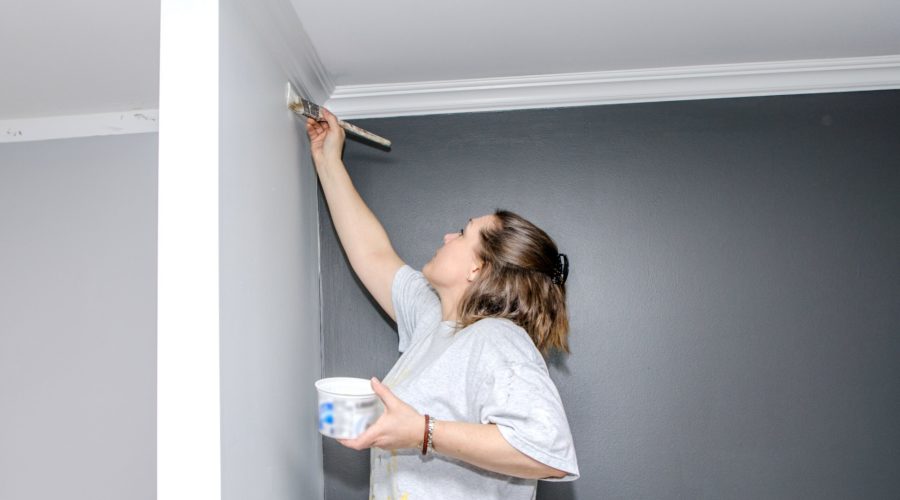Interior Painting: Guide to Trim Paintbrushes

Brushware’s Guide to Trim Brushes for Interior Painting
When it comes to interior trim painting, the choice of paintbrush can significantly impact the final result, especially when dealing with trim. The following guide covers the types and sizes of paintbrushes for trim, when to opt for a roller instead of a brush and tips for achieving a flawless finish without brush marks.
The best paintbrush for trim is one that allows for precision, control and versatility. Your main objectives are to keep your work clean, cover all edges and navigate smaller spaces effectively. As you prepare for the job, consider the following brush types for the most effective performance:
Angled Paintbrushes:
- Allows better coverage of trim details.
- Facilitates clean lines while painting.
Bent Handle Paintbrushes:
- Essential for maintaining control in limited spaces.
- Ensures thorough coverage of corners and edges.
Additional Considerations:
- Straight-cut paintbrushes for large flat or low-relief trim.
- Chisel brushes for corners and precise edges.
Understanding Paintbrush Characteristics
Before selecting a brush for your next interior trim project, it is key to consider the ideal size, shape and stiffness for best results. From brush width to bristle shapes, each detail matters.
In general, the two-inch paintbrush for trim is a good first choice, striking a balance between size, precision and coverage efficiency. Its moderate width prevents common mistakes, ensures accurate navigation of details and facilitates a clean finish. Other sizes are also available, with each range offering a specific advantage:
- 1 to 1.5-inch brushes for precise details as smaller handles enable better maneuverability in complicated spaces.
- 2 to 2.5-inch brushes for moderate detail and somewhat wide trim. Arroworthy offers a 2.5″ semi-oval angled option through Amazon that is a great option to painters.
- 3-inch and larger brushes for very wide and flat trim.
Choosing the Right Bristle:
- Synthetic bristle paintbrushes are ideal for water-based latex or acrylic paints.
- Natural fiber paint brushes for oil-based paints.
- Nylon is recommended for indoor trim as polyester works better for outdoor trim.
Selecting Paintbrush Stiffness:
- Flexible brushes for smooth painting.
- Stiff brushes for accuracy and fine details.
- Medium-stiff brushes for a balanced approach.
Paintbrush or Roller: Making the Right Choice
When to Choose a Paintbrush:
- Trim has intricate detailing.
- Working on a smaller-sized project.
- Prioritizing a high-quality finish.
- Time is not a constraint.
When to Choose a Paint Roller:
- Predominantly flat trim or baseboard.
- Large amount of trim to paint.
- Seeking a quick and easy painting process.
- Refreshing trim without major detailing.
Using Both:
- Apply the main coat with a roller for speed.
- Switch to a brush to cover missed spots and achieve precision.
How to Avoid Brush Marks
Achieving a flawless finish involves more than just choosing the right brush. Follow these tips to paint trim without brush marks:
- Clean Your Trim: Remove dust and debris for better paint adhesion.
- Use Long, Continuous Strokes: Minimize interruptions to keep the paint smooth.
- Use Smaller Amounts of Paint: Dip bristles no more than halfway for a manageable level of paint to prevent mess.
- Sand Your Trim: A smooth surface is better for paint adhesion.
- Use a Primer First: Enhances paint adhesion and provides a smoother finish.
Brushware Buyers’ Guide:
Paint Products Companies
ArroWorthy
248 Wayandanch Ave.
West Babylon, NY 11704
United States
Phone: 631-643-0436
Fax: 631-253-9428
Website: www.arroworthy.com
Royal Paint Roller
248 Wyandanch Avenue
West Babylon, NY 11704
United States
Phone: 631-643-8012
Fax: 631-253-9428
Young & Swartz, Inc.
39 Cherry St.
Buffalo, NY 14204
United States
Phone: 716-852-2171 / 800-466-7682
Fax: 716-852-5652
Website: www.youngandswartz.com
View all brush manufacturers in the Brushware Online Buyers’ Guide.



